The elderberry is a member of the honeysuckle family, and can grow either as a shrub or as a small tree that reaches 20 feet tall. Fully grown elderberry plants yield delicate white flowers during the spring, but they change into berries once fall arrives.
Elderberry plants, while native to Europe, Africa and some portions of Asia, are abundant in western and eastern portions of the U.S. and areas in Canada, such as southern Ontario, Nova Scotia and Manitoba.
A uniquely American fruit familiar to the nation’s first inhabitants, Native Americans used almost every part of the elderberry plant. Apart from eating the berries and using them to address health concerns, tools were crafted from the branches, such as arrow shafts and pipes.
While elderberries are still a novelty to many Americans, they can be used to make juices, wine, extracts, syrups and jams, and can be frozen for future use in a glass jar after being washed and patted dry.
When picking elderberries, choose blue, dark purple or black fruits, as they’re the only elderberry varieties that can be eaten. Cook them thoroughly because raw berries contain a cyanide-producing chemical. Unripe green or red elderberries mustn’t be eaten at all because they are toxic, even when cooked.
Health Benefits of Elderberries
Sambucus nigra — European or black elder — may be the cultivar most often used for medicinal purposes throughout the world and over decades and centuries of application, allowing researchers to discover what elderberries have to offer.
Findings have revealed that elderberries are a very good source of fiber and vitamin A, and contain high amounts of infection-fighting vitamin C, said to be equal to citrus fruits and a bit higher than that of black currant. Other prominent nutrients in elderberries include iron, potassium, vitamin B6 and beta-carotene.
Flavonoids are another component that make elderberries an antioxidant-rich food, as they’re capable of providing antioxidant and antimutagenic abilities, which may help decrease risk for cardiovascular disease and stroke. One study suggested that the elderberry extract helped address influenza A and B infections within four days, while other research has noted that elderberries have anti-inflammatory, antiviral and even anticancer and antidiabetic properties.
Elderberries may be utilized to soothe upset stomach and address gas, help with weight loss and are reputed to have diuretic and detoxifying properties.
According to the book “Herbal Antivirals: Strengthen Your Immunity Naturally,” both the flowers and berries possess chemicals that may help address mucous membrane swelling, such as sinuses, and aid in relieving nasal congestion. However, doctors recommend that pregnant and breastfeeding women avoid eating elderberries because there isn’t enough information regarding the fruits’ safety toward them.
Meanwhile, elderberry flowers were traditionally utilized as external washes to help address wounds, sprains, bruises and sores on domestic animals. They’ve been used for cosmetic purposes too, as elderberry flower water is said to soften, tone and restore the skin and lighten freckles. Flowers can also be added into a lotion that may help soothe burns, sunburns and chilblains. If you’re wondering about the other nutrients you can find in elderberries, take a look at the table below:
Elderberries Nutrition FactsServing Size: 3.5 ounces (100 grams), raw |
||
| Amt. Per Serving |
% Daily Value* |
|
| Calories | 73 | |
| Calories from Fat | 4.2 | |
| Total Fat | 0.5 g | 1% |
| Saturated Fat | 0 g | 0% |
| Trans Fat | ||
| Cholesterol | 0 g | 0% |
| Sodium | 6 mg | 0% |
| Total Carbohydrates | 18.4 g | 5% |
| Dietary Fiber | 7 g | 21% |
| Sugar | ||
| Protein | 0.7 g | |
| Vitamin A12% | Vitamin C | 60% |
| Calcium4% | Iron | 9% |
*Percent Daily Values are based on a 2,000 calorie diet. Your daily values may be higher or lower depending on your calorie needs.
Studies Done on Elderberries
When the phenolic, anthocyanin and antioxidant capacities of the American elderberry were tested for free radical-scavenging abilities, researchers found that the berries had effects similar to blackberries, black raspberries and other small, deep-hued fruits. Anthocyanins play a role in causing significant and positive results, resulting in recommendations for further study and development of elderberry compounds for research.
Antiviral components of elderberry fruit extract were also tested and found to effectively prevent human influenza A (H1N1 virus) infection in vitro, possibly by blocking the ability of the virus to infect host cells. The extract was so effective that researchers compared its ability with those of prescription medications like Amantadine and Oseltamivir (Tamiflu).
How to Grow Elderberries
Elderberry plants can be grown in USDA zones 3 to 10, particularly in moist or wet locations. American elderberry plants can be propagated using germinated seeds, large plants that have been divided, root cuttings, or hardwood or soft-wood cuttings. You can buy the last two options from a reputable nursery.
The Utah State University Extension advises that you should plant hardwood cuttings in February or March before bud break, while soft-wood cuttings must be planted before July. If you have elderberry container plants, propagate them before summer heat sets in and after the threat of hard frost is gone.
When planting elderberries, provide at least 4 feet of space between plants in all directions, depending on the plant cultivar. If you’re growing elderberries in multiple rows, make sure there is a 6- to 8-feet allowance between them.
Elderberry plants grow best in fertile soil containing high amounts of organic matter and nutrients, with a neutral pH level. You can also add compost or other organic matter to boost the soil’s nutrient levels and capacity to hold water. The plants need proper drainage to prevent root rots, so if you have heavy clay soils, consider forming raised beds to enhance drainage. Elderberry plants thrive best when they receive full sun, but provide shade when temperatures rise.
While elderberry plants are drought-tolerant (provided that roots are able to anchor themselves), they must be irrigated regularly to produce high-quality fruits. Elderberry plants must be given at least 1 to 2 inches of water weekly during the summertime. Don’t forget to mulch the soil so it retains moisture and doesn’t cause weed development.
Refrain from fertilizing elderberry plants at the time of planting. Instead, wait for two months after and lightly apply some nitrogen (1/4 cup ammonium sulfate per plant). Once you have plants actively producing fruits, provide 1 cup of ammonium sulfate per plant annually as fertilizer.
Pruning must be done annually, during February or March while the plant is dormant, so they remain healthy and look neater. Remove dead, damaged or diseased canes, and discard all 3-year-old and older canes to promote new growth and encourage younger canes to produce better fruits. Lastly, tip back weak canes and shape the plant, if it’s a shrub.
Elderberry plants are known to produce suckers, or vertical growths arising from a plant’s roots or lower main stem. While suckers can be helpful when growing a native garden inexpensively, they can cause problems and become invasive. Make sure to also take proper care of your American elderberry plants, since they can attract these pests:
- Aphids
- Currant borers
- Fall webworms
- Rose chafers
- Sawfly larvae
- Birds
- Elder shoot borer (Achatodes zeae)
- Grape mealybugs
- San Jose scales
- Spider mites
- Cecropia moth caterpillars (Hyalophora cecropia)
- Eriophyid mites
- Potato flea beetles
- Sap beetles
- Thrips
American elderberry plants are also prone to diseases such as cankers, dieback, leaf spots, powdery mildew, root rots, thread blight, tomato ringspot virus and Verticillium wilt.
How to Pick and Store Elderberries
You can harvest elderberries once a cluster of flowers has opened. Elderberries that are ready for harvest have a rich and blue, dark purple or black hue, are slightly soft and are found in large bunches called umbrellas.
According to the Oklahoma Cooperative Extension Service, the elderberry tree can yield a small crop after one year. The amount of berries you can harvest increases after the third year of planting, as an elderberry plant may already produce 12 to 15 pounds of delicious berries.
Elderberry harvesting must be done from mid-August to mid-September, depending on your location and cultivar of the plant. If you’re gathering wild elderberries, pick from areas that aren’t near roadsides and aren’t exposed to a lot of vehicle traffic.
To harvest elderberries, cut flowers and stems using pruners, right below the ripe berries. Avoid cutting the stems too short as they can be helpful when handling and preparing the berries. Discard immature berries and use fresh elderberries as soon as possible.
Wash elderberries to eliminate insects or debris, spread them on a dishtowel to dry for a few minutes and keep berries with stems intact in containers. Try to store the berries loosely so they won’t be crushed. Once done, seal containers tightly and freeze berries for future use.
You can also de-stem the berries on the same day you froze them. Spread the elderberries on a cookie sheet and freeze uncovered for one to two hours. Afterward, they may be frozen solid and easily removed from the stems using your hands. Throw away stems and use the berries immediately. If you have excess berries, place them in tightly sealed containers inside your freezer.
Freezing the berries this way allows you to remove them from the stems easily, helps you avoid squishing them and decreases your risk for adverse effects caused by the plant’s stems, twigs, roots and leaves, all of which are known to be toxic.
Elderberries Fun Facts
Elderberry’s unique name was derived from the Anglo-Saxon word “aeld,” meaning “fire,” because the hollow stems of this plant were used to gently blow on flames to intensify them. Meanwhile, “Sambucus” is a Greek word meaning “wind instrument.” Native Americans also called elderberry the “tree of music” because its branches were utilized to make flutes.
Summary
Elderberries are a truly unique fruit you can add to your diet because of the possible benefits they can offer. Native Americans have utilized various parts of the elderberry plant to create items needed for survival55 and concoct herbal treatments that’ll address certain conditions.
The berries are arguably the most prominent part of the plant, with a history of helping relieve cold and flu symptoms, reducing congestion and arthritis pain, soothing upset stomachs, relieving gas and promoting detoxification. Elderberry flowers are also popular for making solutions to soften, tone and restore the skin, address chilblains, and sooth sunburns and burns.
Besides lots of flavonoids and free radical-scouring antioxidants, elderberries contain high amounts of vitamins C and A, potassium, iron, vitamin B6, fiber and beta-carotene. Elderberries add a delightful flavor to foods and can be used to make wine, juices, extracts, syrups and jams.

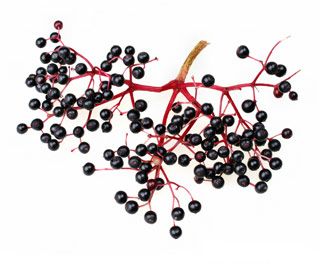
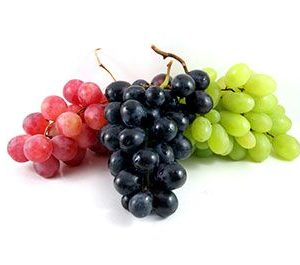

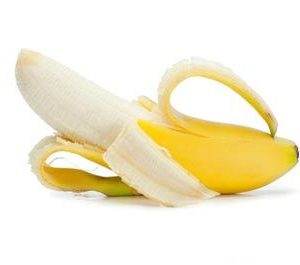
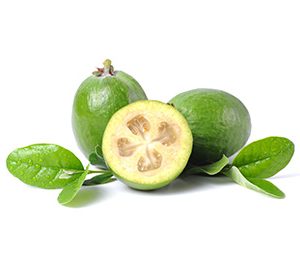
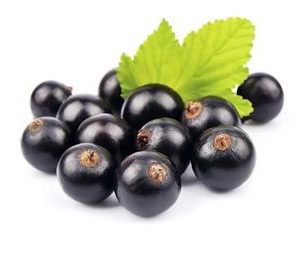
Reviews
There are no reviews yet.